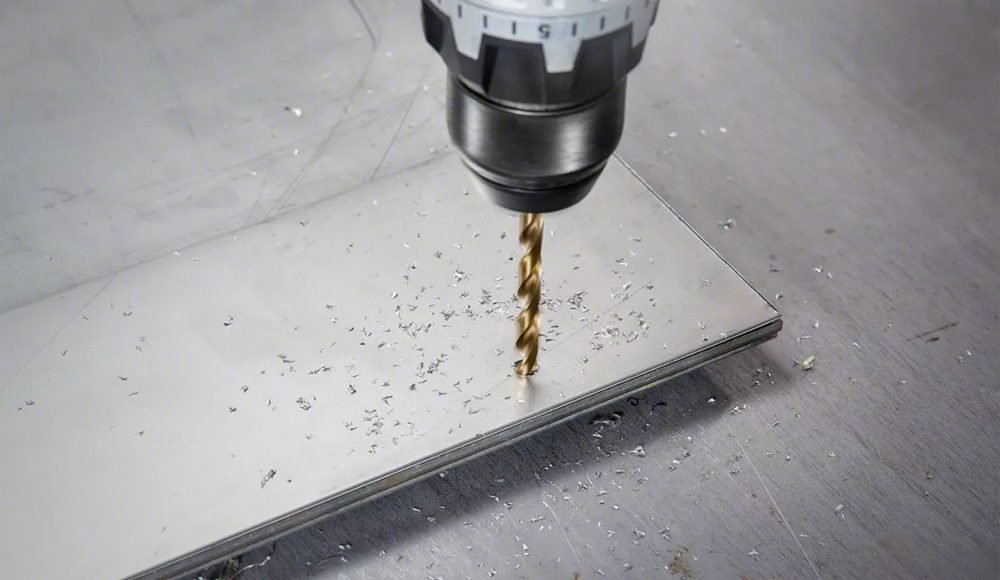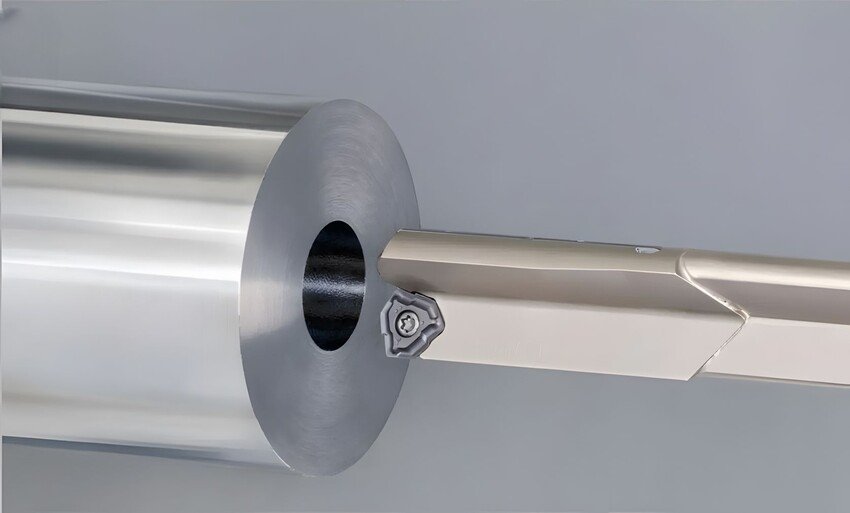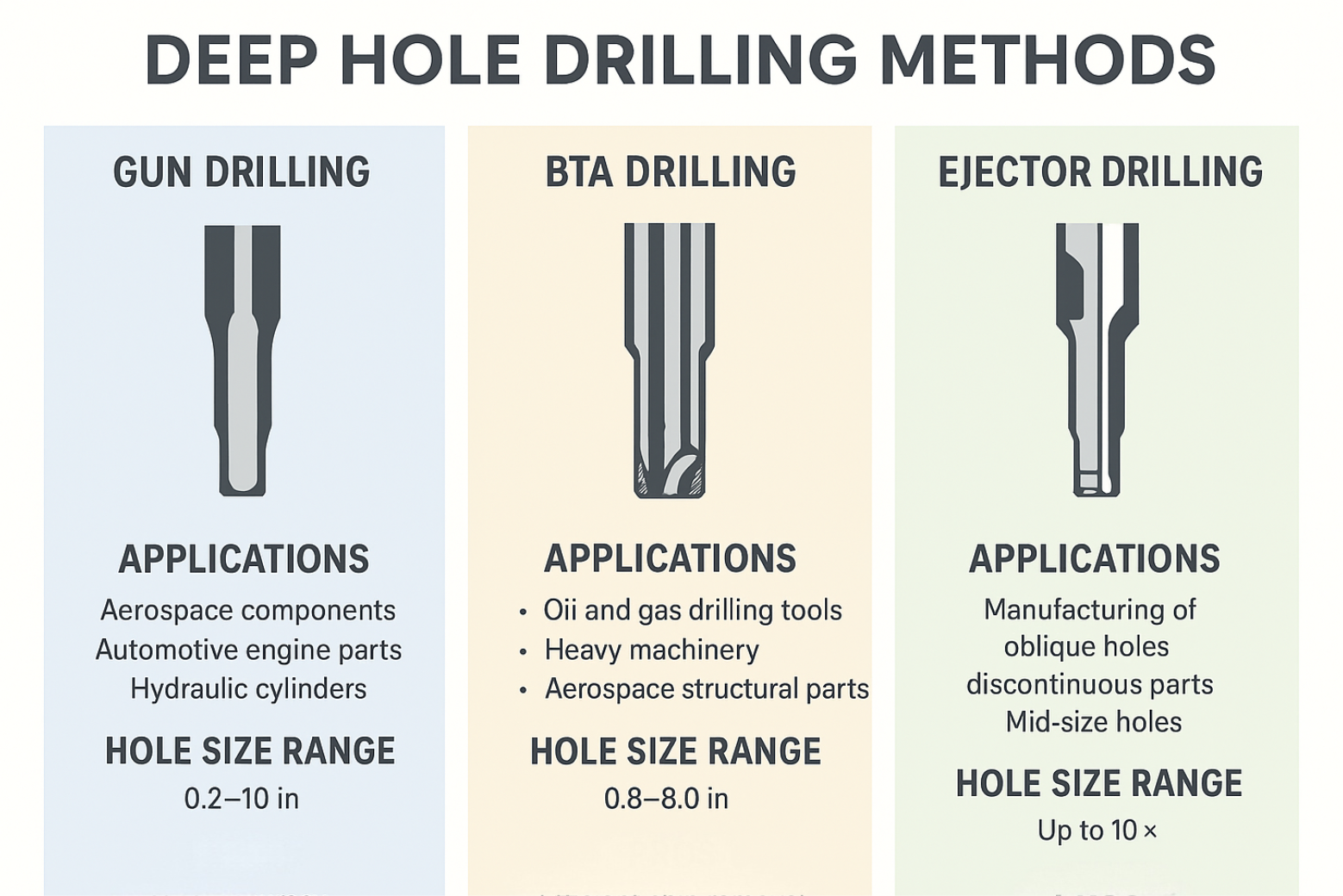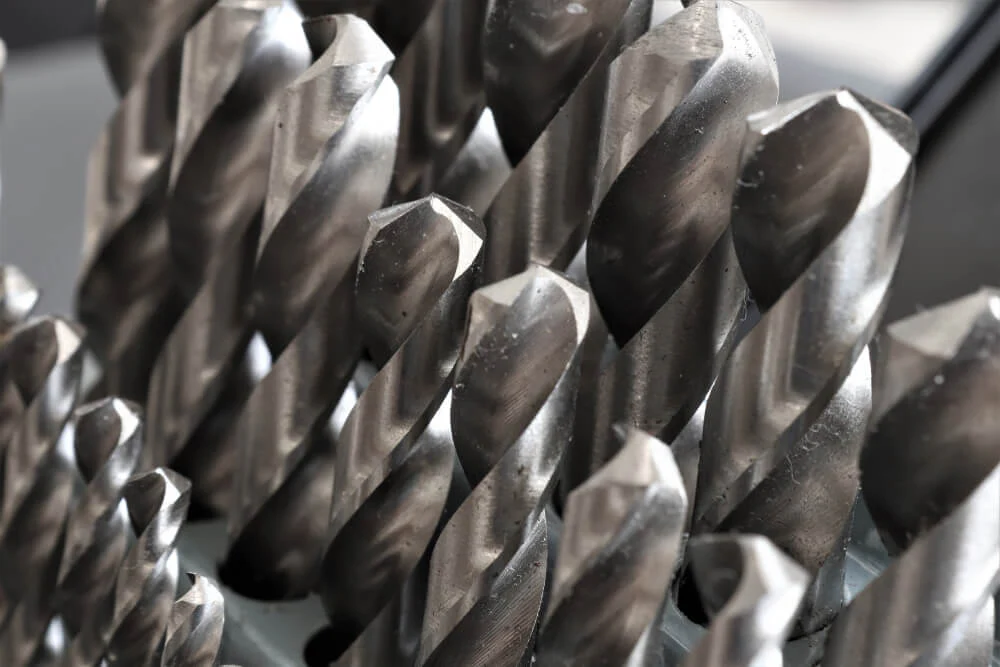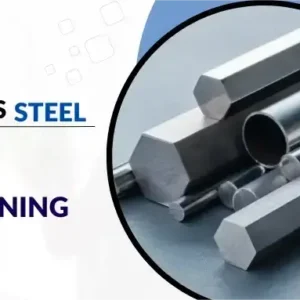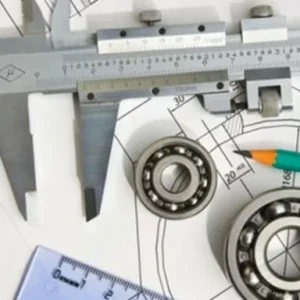A perfuração de buracos profundos pode parecer um processo altamente especializado, E isso é porque é. Ao contrário da perfuração padrão, where the hole depth is relatively shallow, deep hole drilling is designed for creating holes with a depth-to-diameter ratio of 10:1 or greater. This technique is widely used in industries where accuracy, força, and reliability are critical — such as aerospace, automotivo, óleo & gás, and even medical devices.
Neste artigo, we’ll dive into what deep hole drilling is, Por que é importante, the different methods used, the challenges involved, and practical solutions. Até o final, you’ll have a complete understanding of how this process powers some of the world’s most advanced technologies.
What Is Deep Hole Drilling?
Na sua essência, deep hole drilling is a machining process designed to produce preciso, straight, and clean holes that are significantly deeper than they are wide.
Definição: A hole is considered a “deep hole” when its depth is at least 10 times its diameter (10:1 ratio).
Origin: Historically, the process began with the manufacturing of gun barrels, which demanded long, straight, and highly accurate bores. This is why gun drilling is still one of the most common techniques.
Modern Use: Hoje, the same principles apply to industries like aerospace (componentes do motor), automotivo (fuel injectors, virabrequins), e óleo & gás (drilling tools and pipelines).
Deep hole drilling ensures integridade estrutural, smooth performance, and high precision where normal drilling methods fall short.
Importance of Deep Hole Drilling in Modern Industries
Aeroespacial e Defesa
Na indústria aeroespacial, lightweight yet strong materials are crucial. Deep hole drilling is used to produce components like trem de pouso, hydraulic systems, and even weapon systems. Precision is non-negotiable since even minor errors can affect performance and safety.
Indústria automobilística
Automobiles rely on deep hole drilling for components such as:
Injetores de combustível (pequeno, precise holes for fuel flow)
Virabrequins & Áreas de cames (oil passageways for lubrication)
Cilindros hidráulicos (used in steering and braking systems)
Aqui, durability and accuracy directly influence engine efficiency and vehicle reliability.
Óleo & Indústria de gás
In oil exploration and drilling, tools and pipes often need long boreholes that can withstand harsh conditions. Deep hole drilling ensures força, confiabilidade, and resistance to wear in components like drilling heads and petroleum instruments.
Engineering & Aplicações Médicas
Em hydraulic systems, longo, straight holes are needed for pressure control and smooth fluid flow.
Em dispositivos médicos, such as surgical instruments, deep hole drilling ensures components are both tiny and highly accurate for safe operations.
Key Benefits of Deep Hole Drilling
Alta Precisão – The ability to drill straight, accurate holes over long depths.
Improved Surface Finish – Smooth walls reduce friction and wear in critical applications.
Eficiência & Vida da ferramenta – Specialized drill designs and coolant delivery extend tool life and reduce costs.
Versatilidade – Can handle a wide range of materials, from steels to superalloys.
Common Techniques in Deep Hole Drilling
Gun Drilling
Best for small-diameter, straight holes.
Produces excellent accuracy and surface finish.
Common in firearm manufacturing, peças aeroespaciais, and automotive fuel systems.
BTA (Boring and Trepanning Association) Perfuração
Used for larger hole diameters.
A single-tube system removes chips efficiently through the center.
Ideal for oil & gás, maquinaria pesada, and aerospace structural parts.
Ejector Drilling
Works with a double-tube system.
Offers flexibility and can be used on standard machining centers.
Perfect for mid-size holes where production speed is important.
Considerations for Tools and Equipment
Para alcançar os melhores resultados, several factors need attention:
Drill Bit Selection: Choosing the right bit (gun drill, BTA, or ejector) for the material and hole size.
Sistemas de refrigeração: High-pressure coolants are essential for removing chips and preventing tool wear.
Machine Capabilities: Specialized machines with rigid setups are often required to prevent vibration and misalignment.
What Type of Drill Bit Is Suitable for Drilling Through Metal?
When it comes to drilling into metal, not all drill bits are created equal. Using the wrong type can make the job frustrating and even damage your tools or the workpiece. That’s why picking the right drill bit is so important.
Aço de alta velocidade (HSS) Drill Bits
These are the most common and affordable drill bits. They work well for softer metals like aluminum, latão, e aço suave. If you just need a basic option, HSS is usually enough.
Cobalt Drill Bits
Stronger than HSS, cobalt drill bits are perfect for harder metals like stainless steel or cast iron. They can handle higher heat, which is great because drilling through tougher metals creates more friction.
Carbide Drill Bits
These are the heavy-duty champs. Carbide bits are extremely hard and can cut through really tough metals, but they’re also brittle, meaning they can snap if not used carefully. They’re often used in industrial settings where precision and durability are key.
Titanium-Coated Drill Bits
These are HSS drill bits with a titanium coating. The coating makes them last longer by reducing friction and heat. They’re a nice middle ground if you want better performance than regular HSS without paying the high cost of cobalt or carbide.
Challenges and Solutions in Deep Hole Drilling
Misalignment and Tool Breakage
Problem: Slight misalignment can cause tool deflection or breakage.
Solução: Use precision fixturing, steady rests, and real-time monitoring systems.
Workpiece Stability
Problem: Long workpieces can vibrate or move during drilling.
Solução: Secure clamping and vibration-dampening setups.
Material-Specific Challenges
Problem: Hard alloys or heat-resistant metals cause excessive wear.
Solução: Use coated drill bits (carboneto, Lata, etc.) and optimize feed/speed parameters.
Por que escolher Precisão máxima for Deep Hole Drilling?
Not every machine shop is equipped for deep hole drilling. Tops Precision provides:
Perícia – Years of experience with complex drilling projects.
Alta Precisão – Advanced equipment and strict quality control.
Eficiência de custos – Competitive pricing without compromising quality.
Reliable Partnership – Commitment to delivering on time and meeting industry standards.
Conclusão
Deep hole drilling is more than just making a hole — it’s about creating preciso, confiável, e componentes de alto desempenho that power everything from jet engines to medical tools. With the right methods, ferramentas, and expertise, it opens the door to endless possibilities across industries.
If your project requires deep hole drilling services, partnering with a skilled manufacturer ensures you get the precision and performance you need.
Perguntas frequentes
1º trimestre: What is the difference between deep hole drilling and normal drilling?
Deep hole drilling handles much higher depth-to-diameter ratios (10:1 ou mais), while standard drilling typically stays under 3:1.
2º trimestre: What drill bits are best for deep holes in wood?
Specialized extra-long twist drills or gun drills designed for woodworking.
3º trimestre: What is the standard depth-to-diameter ratio for deep hole drilling?
10:1 or greater, though in some cases, it can go well beyond 100:1 with advanced equipment.
Leia mais:
Serviços de fresagem CNC (for comparison of hole-making methods)
Serviços de usinagem de precisão
Surface Finishing for Machined Parts
Machining Stainless Steel / Machining Titanium

